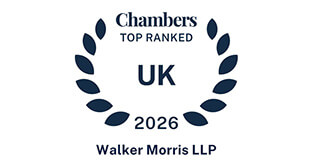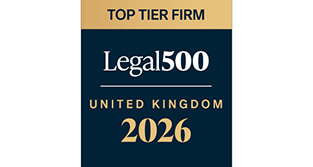JCT Target Cost Contract 2024: a new era of risk sharing?
30th July 2025
“This new contract family is a welcome addition to the JCT suites and a step towards more collaborative, cost-conscious contracting. If you’re looking for more transparent pricing and alternatives to fixed-price models within the construction industry, this could be a good option. Now is the time for employers and contractors to get familiar with the payment mechanics of this new form, run the numbers, and assess whether this model fits their project strategy.“

The Joint Contracts Tribunal (JCT) released the Target Cost Contract 2024 on 25 June 2025. It is the final piece in the publication of the JCT 2024 Edition suites.
This new contract family introduces a fresh approach by the JCT to cost management and collaboration. It includes:
- Main Contract (TCC 2024)
- Sub-Contract (Sub-Contract Agreement TCCSub/A 2024 and Conditions TCCSub/C 2024)
- Guides for both Main and Sub-Contracts (TCC/G 2024 and TCCSub/G 2024)
According to the JCT, the ethos of this form is risk sharing and both Employer and Contractor can benefit from their joint efforts in ensuring the project has a successful financial outcome.1
In this article, we’re exploring the features of the TCC 2024 and sharing our key takeaways.

Key features of the TCC 2024
The TCC 2024 largely follows and builds on the familiar JCT Design and Build Contract 2024 Edition (DB 2024), however its payment mechanism is notably different.
In summary:
- At the outset of the contract, the Employer and the Contractor agree a “Target Cost” and a pain/gain mechanism on any actual cost above or below this level, based on thresholds and/or percentages set out in the Contract Particulars (the “Difference Share“).
- The Target Cost evolves and is adjustable throughout the contract in line with other JCT Contracts (e.g. to account for Changes, loss and expense, acceleration and/or fluctuations). This is known as the “Adjusted Target Cost“.
- The Contractor is entitled to be reimbursed for costs incurred in carrying out work (the “Allowable Cost“), together with payment of a fixed sum or percentage fee of the Allowable Cost to cover overheads and profit (the “Contract Fee“), plus any sum payable in respect of the Difference Share.
- Calculation of the Difference Share compares the final amounts of the Allowable Cost and the Contract Fee with the final Adjusted Target Cost (or where the Difference Share applies to Interim Payments, the gross value of the work completed with the Adjusted Target Cost Value of Work Completed) to determine any gain/pain share. For example, overspend between 100% and 110% may be subject to pain share of 50%; overspend between 110% and 120% may be subject to pain share of 75%.
We explore each of these key terms in more detail below.
Target Cost
Unlike traditional JCT contracts that use a fixed lump ‘Contract Sum’, the TCC 2024 introduces a Target Cost, which is set out in Article 2. This figure is established based on the Employer’s Requirements, the Contractor’s Proposals, and a detailed Target Cost Analysis.
The JCT recommends that the Target Cost Analysis is as detailed as possible, and that the Employer’s Requirements are prescriptive as to the format and level of detail required2.
The Target Cost Analysis should clearly break down how the Target Cost has been calculated. It also serves as a benchmark and is used in calculating the Adjusted Target Cost Value of Work Completed (see commentary on the “Difference Share” below).
Allowable Cost
The Allowable Cost is the costs incurred by the Contractor in carrying out its obligations under the TCC 2024 of the types specified in Schedule 2.
Schedule 2 splits these costs into seven categories:
- Part 1: General
- Part 2: Sub-Contract Work
- Part 3: Contractor’s Management and Design Staff on Site etc.
- Part 4: Contractor’s Direct Workforce
- Part 5: Materials and Goods provided by the Contractor
- Part 6: Plant, Services and Consumable Stores provided by the Contractor
- Part 7: Sundry Costs incurred by the Contractor
The Allowable Cost is calculated in accordance with Schedule 2 and the Contract Particulars (clause 4.5) which sets outs any Part(s) where lump sums, all-in rates or prices have been agreed in lieu of using actual cost (for example hourly rates for staff).
Part 1 (General) of Schedule 2 outlines the general principles for calculating the Allowable Cost. It confirms that no cost may be included unless it can be reasonably substantiated by the Contractor’s accounts and records. To enable the Employer or the Employer’s Agent to verify or calculate the Allowable Cost, the Contractor must:
- Keep records, measurements, accounts and supporting documentation in the format specified in the Employer’s Requirements or as the Employer or Employer’s Agent may reasonably require.
- Give the Employer, the Employer’s Agent and their respective representatives all reasonable facilities at all reasonable times for the inspection and verification of all such records, measurements, accounts and documentation.
- Permit the Employer or Employer’s Agent at any time on reasonable notice to carry out audits of such records, measurements, accounts and supporting documentation.
- Promptly provide such further information and explanations as the Employer, the Employer’s Agent and their respective representatives may reasonably require.
The remaining Parts of Schedule 2 detail what can and cannot be charged under each category. For example, under Part 2 (Sub-Contract Work), the Allowable Cost includes amounts due and payable to sub-contractors (appointed in accordance with clause 3.3 of the TCC 2024) but excludes any amounts payable to the sub-contractors arising from the Contractor’s own default, whether by act or omission.
Contract Fee
The Contract Fee is specified at clause 4.6 of the Contract Particulars. It is either a fixed sum or a percentage of the Allowable Cost. It is intended to cover all other costs and expenses of the Contractor other than the Allowable Cost.
Where the Contract Fee is a fixed sum, it is adjusted in accordance the formula set out at Schedule 3 (unless otherwise stated in the Contract Particulars). This formula adjusts the Contract Fee where it is a fixed sum to reflect any difference between the original Target Cost and the Adjusted Target Cost.
Difference Share
Any sum payable to the Contractor in respect of the Difference Share is calculated and adjusted under clause 4.7.
- For the final payment (or any Termination Payment), the Difference Share is the difference between the final amounts of the Allowable Cost and the Contract Fee with the final Adjusted Target Cost.
- Where the Difference Share applies to Interim Payments, it is the difference between the gross value of the work completed and the Adjusted Target Cost Value of Work Completed.
The parties can decide whether the Difference Share does or does not apply to Interim Payments by selecting this at clause 4.7.1 of the Contract Particulars. Where clause 4.7.1 does not apply, the Difference Share shall only be calculated for the final payment3.
Clause 4.7.1.1 and 4.7.2.1 of the Contract Particulars sets out the ‘gain’ mechanism where the final amounts of the Allowable Cost and the Contract Fee is less than the final Adjusted Target Cost. Clause 4.7.1.2 and 4.7.2.2 of the Contract Particulars sets out the ‘pain’ mechanism where the final amounts of the Allowable Cost and the Contract Fee exceeds the final Adjusted Target Cost.
The pain/gain mechanism can be structured using either percentage difference bands or monetary difference bands. Given that the Target Cost is adjustable, parties may prefer percentage difference bands for greater flexibility.
What we think
1.Late to the party?
JCT is playing catch-up. NEC3 and NEC4 have long offered target cost options (e.g. the Engineering and Construction Contract (ECC) Option C (target contract with activity schedule) and Option D (target contract with bill of quantities)). With NEC well-established, it will be interesting to see if JCT’s new form of TCC 2024 will gain traction in the industry or if the ‘tried and tested’ NEC forms will be preferred.
2.Fixed price still favoured?
Many businesses and existing JCT users may stick with the simplicity of fixed price lump sum contracts, such as the popular JCT DB 2024 (with two stage tendering for larger/more complex projects becoming increasingly common). It remains to be seen whether the TCC 2024 and its collaborative approach will be embraced by the industry.
3.Management heavy
Target cost contracts demand rigorous administration and management. Not only must Contractors keep good/detailed records, but the Employer (or the Employer’s Agent) must effectively verify and calculate the Allowable Cost. This may include audits. Both parties therefore need to have the right resources and expertise to manage this effectively.
4.Incentives must be right
The success of the pain/gain mechanism hinges on careful calibration. The Target Cost and Difference Share need to be set at the right level:
- If the Target Cost is too high, the Contractor will easily earn the gain share.
- Pain share thresholds and when they kick in must be meaningful. For example, 50% recovery of prolongation on site may still be attractive to contractors and so, the Contractor may not be incentivised to work efficiently.
- For developers, the pain share should ideally become 100% at some point to ensure cost discipline.
These metrics are often subject to significant negotiation and it is helpful to workshop several example scenarios so that all parties are fully satisfied with the final position proposed.
5.Contractor risk exposure
Target cost contracts can be an attractive option when scope is uncertain and there are several risks that cannot be priced clearly. Contractors are more likely to be comfortable to take on such risks knowing that there can be recovery beyond the Target Cost. Employers can benefit from more transparent pricing and potential savings if a perceived risk does not materialise.
Final thoughts
The TCC 2024 is a notable step by the JCT toward more collaborative, cost-conscious contracting. Its success, however, will depend on how well the industry adapts to its mechanisms and whether it can deliver real value over more familiar fixed-price models. Whilst it’s a welcome addition to the JCT suites, it may take time and practical experience for it to prove itself as a viable alternative to more established forms like NEC.
How we can support you
If you have any questions about the best contract for your project, contact our construction experts, Lucy Wild or Jules Harbage.











